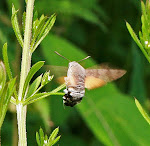September 28-October 3, 2013:
A very dry summer meant that there were almost no remaining fresh water pools or streams on the island. The pools below the Asprokremnos dam and those at Kouklea fish farm and Ezousas were completely dry and the few rivers (Dhiarizos and Polis) also had very little water - although the reservoirs themselves were quite well-filled. Despite this, several dragonflies were seen, some of them a long way from water.
The Purple Dropwing (Trithemis annulata) was photographed at the second bridge above Polis (2 males) and there was an immature individual far from water at Mandrea (lower photo).
Below, an Indigo Dropwing (Trithemis festiva) dark male had territory besides a slight leak from the dam sluice at the Asprokremnos.
Also at the leaking sluice was a mating pair of Epaulet Skimmers (Orthetrum chrysostigma) together with another male.
........and what appeared to be a male Orthetrum coerulescens perched by a dry track at Kouklea fish farm.
Red-veined Darter (Sympetrum fonscolombii) was represented by two males (one far from water near Polis - upper photo - the other by the second bridge upstream from Polis)
Three male Scarlet Darters (Crocothemis erythraea) perched near a damp trickle provided for the cattle at Fassouri reed beds.
......... a lone male Lesser Emperor (Anax parthenope) patrolled the margin of the Evretou reservoir.........
.....and a male Migrant Hawker (Aeshna mixta) perched in dense vegetation by the second bridge at Polis.
Other than these, there was very little Odonata apart from three Blue-tailed Damselflies (Ischnura elegans) of which one was an ovipositing pair - again at the second bridge above Polis.
.jpg)
.jpg)






.jpg)
.jpg)






.jpg)















.jpg)






.jpg)
.jpg)
.jpg)



.jpg)
.jpg)
.jpg)
.jpg)
.jpg)
.jpg)





